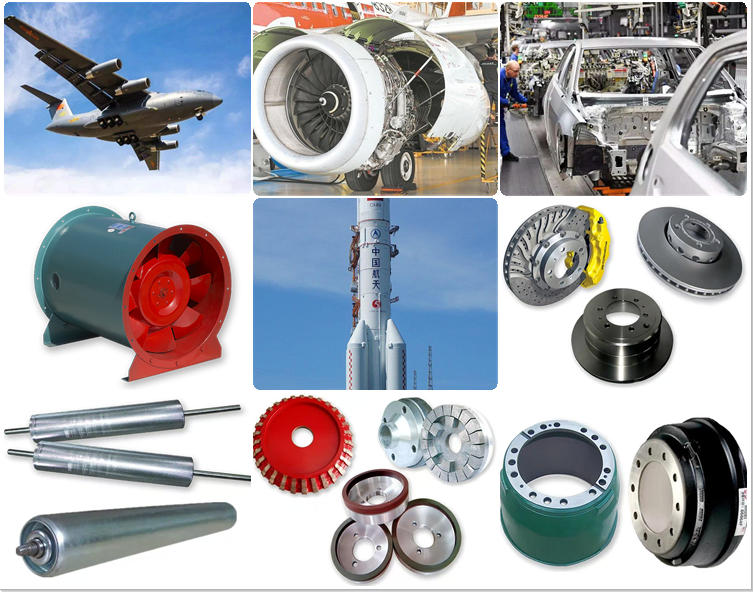The balancer detects and corrects the imbalance of the rotor and ensures that the minimum imbalance in the rotor mass range can be achieved with the existing balancer technology. The dynamic balance of a rotor is an adjustment of the mass range per unit of the rotor itself, and its accuracy and balance state are irrelevant. Customers can rest assured of using the equipment simply by installing the rotors correctly.
Many customers tend to think that the support mode of the rotor balancer is the same as that of the rotor balancer in its working state, which is not so understood. The rotor dynamic balance accuracy on the equipment can meet all the working requirements, which is due to our lack of knowledge of the balancing machine. Since our knowledge of balancing machines is not comprehensive, we tend to think that the faster the dynamic balance is, the better the balance accuracy is, but this is not the case.
A hard-supported balancer with better rigidity can correctly measure the imbalance at lower speeds, rather than the higher the speed, the better the balance accuracy. For rotors of different mass and shape, different balancing speeds are used to achieve the measuring efficiency and precision of the balancing machine. Generally speaking, the speed of hard-supported balancing machine is controlled in the range of 200-1500 r/min, which can meet the requirements of most rotor dynamic balancing machines. For a soft-supported balancing machine, there is a certain relationship between the balancing speed and the balancing accuracy. In the speed range, the balancing speed and the balancing accuracy are linear.

After collecting and sorting out customers'ideas and opinions, some customers believe that the balancing speed of the balancing machine should reach the working speed of the rotor and the dynamic balancing accuracy of the rotor will reach the standard. This is because the customer's understanding of the concept of balancing speed is not yet clear.
Balancing speed: The speed of the balancer during the dynamic balance check. For rigid rotors, lower speeds should be selected as far as possible while ensuring accuracy. That is, the balancer can measure the rotor efficiently at calibrated balancing speeds.
Data is not smooth: the balance speed is mainly related to the mass and shape of the rotor. Generally speaking, the greater the rotor mass, the lower the balancing speed, but independent of the operating speed.
When choosing a balancer, the quality of the balancer rotor and the balancer support are key reference indexes. Huake Zhichuang Balancer different types of dynamic balancer can measure various types of rotors, so there are many types of balancer produced, all types of rotors can be balanced. The quality of the rotor should be kept within the allowable range of the load-bearing quality of the balancer, so as to improve the working efficiency of the balancer, maintain the accuracy of the balancer and extend the service life of the dynamic balancer.
Many customers tend to think that the support mode of the rotor balancer is the same as that of the rotor balancer in its working state, which is not so understood. The rotor dynamic balance accuracy on the equipment can meet all the working requirements, which is due to our lack of knowledge of the balancing machine. Since our knowledge of balancing machines is not comprehensive, we tend to think that the faster the dynamic balance is, the better the balance accuracy is, but this is not the case.
A hard-supported balancer with better rigidity can correctly measure the imbalance at lower speeds, rather than the higher the speed, the better the balance accuracy. For rotors of different mass and shape, different balancing speeds are used to achieve the measuring efficiency and precision of the balancing machine. Generally speaking, the speed of hard-supported balancing machine is controlled in the range of 200-1500 r/min, which can meet the requirements of most rotor dynamic balancing machines. For a soft-supported balancing machine, there is a certain relationship between the balancing speed and the balancing accuracy. In the speed range, the balancing speed and the balancing accuracy are linear.

After collecting and sorting out customers'ideas and opinions, some customers believe that the balancing speed of the balancing machine should reach the working speed of the rotor and the dynamic balancing accuracy of the rotor will reach the standard. This is because the customer's understanding of the concept of balancing speed is not yet clear.
Balancing speed: The speed of the balancer during the dynamic balance check. For rigid rotors, lower speeds should be selected as far as possible while ensuring accuracy. That is, the balancer can measure the rotor efficiently at calibrated balancing speeds.
Data is not smooth: the balance speed is mainly related to the mass and shape of the rotor. Generally speaking, the greater the rotor mass, the lower the balancing speed, but independent of the operating speed.
When choosing a balancer, the quality of the balancer rotor and the balancer support are key reference indexes. Huake Zhichuang Balancer different types of dynamic balancer can measure various types of rotors, so there are many types of balancer produced, all types of rotors can be balanced. The quality of the rotor should be kept within the allowable range of the load-bearing quality of the balancer, so as to improve the working efficiency of the balancer, maintain the accuracy of the balancer and extend the service life of the dynamic balancer.
339 browse
